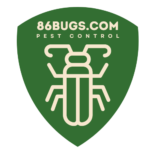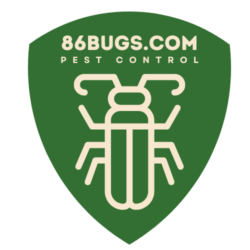Avian Nuisance Mitigation
Starlings
Get the best Starling bird control with 86Bugs line of starling control products. They are easy to install, affordable and humane.
While not a large bird, starlings often appear in large numbers. This can pose a problem for growers and owners/managers of buildings and structures, for the birds will quickly seeks out crevices, nooks and crannies to roost and nest. Starlings can quickly denude a tree or turf, leaving empty branches and lots of droppings in their wake. It’s important to be proactive when dealing with starlings since once they settle in, huge flocks often follow.
Information About Starlings And Starling Bird Control
Starlings are relatively small birds, weighing about 3.2 ounces and are typically 8.5 inches long. Adults are dark with light speckles on the feathers. They prefer to nest in buildings and structures, grazed pastures, open water areas, and livestock facilities for foraging. Starlings will eat fruits, seeds, livestock rations and food in garbage open garbage containers. Winter-roosting flocks can be massive, exceeding 1 million birds in some cases.

Why Starling Bird Control?
Starlings often consume the high-protein supplements that have been added to livestock rations. These birds can transfer diseases from one livestock facility to another. The fungus Histoplasma capsulatum may grow in the soils under their roosts, and spores may go airborne in dry weather. Starlings damage crops by consuming grapes, peaches, blueberries, strawberries, figs, apples and cherries. In some areas, starlings will yank out sprouting grains, like wheat, and eat the planted seed. Starlings have also been known to damage golf course and other turfs. And large roosts in buildings and industrial structures leave filth, noise, and odor. Their wet or damp droppings create slip-and –fall hazards at industrial structures, and large roosts near airports pose bird-strike safety hazards to aircraft.
How to Get Rid of Starlings
There are several humane options for deterring starlings from landing or nesting on your property. It’s important to thoroughly clean up any bird droppings or nesting materials before any deterrent products are installed (starlings are attracted to the scent of their droppings and nests). Here are a few steps you can take to get rid of starlings:
- Starlings can be blocked from rafters or beams with Bird Netting, or Bird Sloping material.
- Bird Jolt Flat Tracks, SpectrumV Holographic Bird Gel or Transparent Bird Gel can be used to prevent starlings from landing on ledges.
Remove Food Sources
- Starlings may be attracted to your garden, lawn area or song bird feeders as a food source. Remove feeders to limit this attraction.
- Remove leftover food on the floor and tables of open-air eateries. Tightly close all trash containers.
- Discourage the feeding of starlings by children or employees.
- Starlings are ground foragers eating invertebrates, insects, berries and seeds. It may be difficult to remove any food sources unless they are feeding in a concentrated area.
Scare Tactics
Starlings are quick and alert to any perceived threats, so Starling bird control scare tactics can be highly effective.
- Create a visual distraction zone by setting up deterrents such as the Reflect-A-Bird, Predator Eye Balloons, Reflective Eye Diverters or shiny reflective objects can be hung in trees to scare off starlings.
- Hawks are a natural predator of starlings. Use a Hawk Decoy in gardens, patios, balconies and other open spaces to scare sparrows away.
- To deter or disperse starlings from trees, use the Bird Chase Super Sonic noise makers, a weatherproof sound deterrent designed for large open spaces.
- Sound deterrents alert starlings of nearby danger by broadcasting predator and sparrow distress calls, making them want to flee the area.
Humane Bird Removal/Professional Installer
If you don’t have the time, resources or expertise to solve your starling problem, 86Bugs offers bird control as a service. We can install bird control products and offer other services such as clean-up and humane trap and starling removal.















